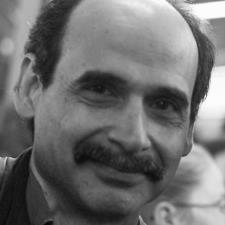
David S. answered • 05/26/20
Photoshop Expert
What are you trying to achieve? Is this simply an academic question or do you want to develop a technique to achieve a specific creative goal? I just played around with a few images in CS6 (prefer not to be stuck with fees for cloud-based version and prefer the relative simplicity of CS6). The easiest way to get an average blur filter to result in R=B=G is to first convert your color image to black and white using the b/w adjustment layer. One image I’m playing with was shot in color, but looks more like a tinted b/w photo with a strong cyan/blue color cast. When I apply average blur, the resulting color is R=100, G=105, B=120. This reflects the colorcast I see in the image, although I realize you’ve taught me a new trick! Looking at these numbers, I see that the color cast is actually blue/cyan, not cyan/blue. This is useful info if I wish to balance the color to get rid of the color cast (which I do not in this case as I want the image to convey a moonlit night). Another is a color monitor reference image: PDI_Target_WhackedRGB.jpg. This can be downloaded from the creator’s website, gballard.net. It is a correct color balanced image, but dominated by warmer hues. When averaged, rgb numbers are 122, 110, 139, a warm light brown color with an hsb value of 265, 21, 55. If I convert to b/w using the b/w adjustment layer, all the values in the image are now perfectly balanced RGB numbers. If I apply the average blur filter, the rgb numbers are 118, 118, 118. In a third color image I shot with a Canon 5Ds, the color range is fairly limited. If I apply the average filter, rgb values are 80, 81, 79. If I convert to b/w first and then average, the numbers are 80, 80, 80. Does this info help at all with what you are trying to achieve? If not, let me know more specifically what your goal is. Just about anything you envision within photography can be achieved with Photoshop.




